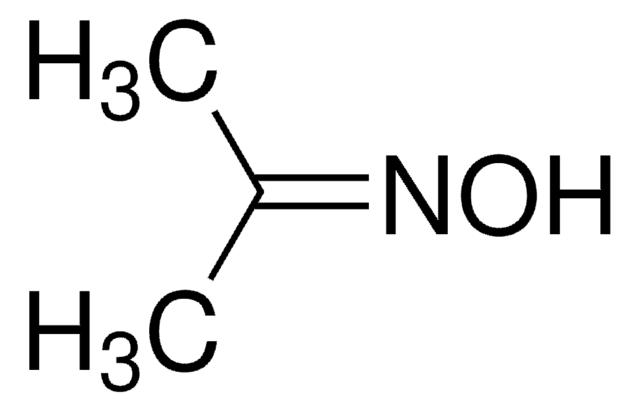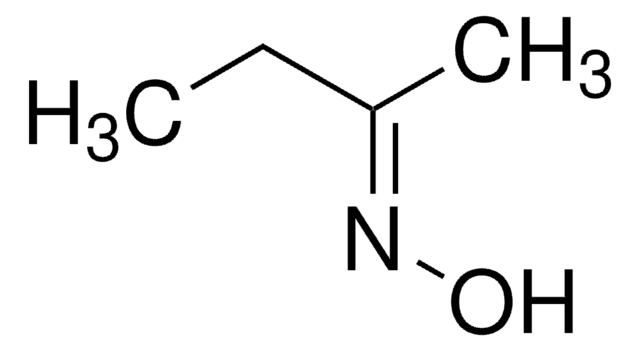40390
Dimethylglyoxime
puriss. p.a., ACS reagent, for the detection of Ni, ≥99.0% (TLC)
Synonyme(s) :
2,3-Butanedione dioxime, Diacetyldioxime
About This Item
Produits recommandés
Qualité
ACS reagent
puriss. p.a.
for the detection of Ni
Niveau de qualité
Pureté
≥99.0% (TLC)
Forme
solid
Technique(s)
UV/Vis spectroscopy: suitable
Impuretés
≤0.02% insoluble matter in ethanol
Résidus de calcination
≤0.05% (as SO4)
Pf
240-241 °C (lit.)
Solubilité
water: soluble 0.1 g/10 mL, clear, colorless
Traces de cations
Ca: ≤10 mg/kg
Cd: ≤5 mg/kg
Co: ≤5 mg/kg
Cr: ≤5 mg/kg
Cu: ≤5 mg/kg
Fe: ≤5 mg/kg
K: ≤50 mg/kg
Mg: ≤5 mg/kg
Mn: ≤5 mg/kg
Na: ≤50 mg/kg
Ni: ≤5 mg/kg
Pb: ≤5 mg/kg
Zn: ≤5 mg/kg
Groupe fonctionnel
amine
oxime
Chaîne SMILES
CC(=N/O)\C(C)=N\O
InChI
1S/C4H8N2O2/c1-3(5-7)4(2)6-8/h7-8H,1-2H3/b5-3+,6-4+
Clé InChI
JGUQDUKBUKFFRO-GGWOSOGESA-N
Vous recherchez des produits similaires ? Visite Guide de comparaison des produits
Description générale
Application
Mention d'avertissement
Warning
Mentions de danger
Conseils de prudence
Classification des risques
Flam. Sol. 2
Code de la classe de stockage
4.1B - Flammable solid hazardous materials
Classe de danger pour l'eau (WGK)
WGK 3
Équipement de protection individuelle
Eyeshields, Faceshields, Gloves, type P3 (EN 143) respirator cartridges
Faites votre choix parmi les versions les plus récentes :
Déjà en possession de ce produit ?
Retrouvez la documentation relative aux produits que vous avez récemment achetés dans la Bibliothèque de documents.
Les clients ont également consulté
Notre équipe de scientifiques dispose d'une expérience dans tous les secteurs de la recherche, notamment en sciences de la vie, science des matériaux, synthèse chimique, chromatographie, analyse et dans de nombreux autres domaines..
Contacter notre Service technique











